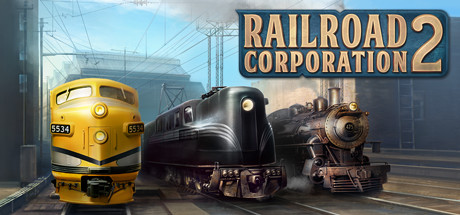We are back with another developer deep-dive, we delve into the intriguing subject of "Steam locomotive exhaust." The color and intensity of locomotive exhaust can vary significantly, prompting us to explore the factors influencing these variations. Our aim is to portray the railroad environment in a realistic manner within the constraints of our capabilities.

Locomotive exhausts comprise two main components, namely smoke and steam, blended in varying proportions. Smoke originates from the combustion of wood, coal, or oil, the widely adopted fuels during the game's time period. Beyond impurities, the combustion products include carbon dioxide, carbon monoxide, and carbon itself. Of these, carbon dioxide is deemed the most “useful” due to its superior thermal energy output during the transformation of carbon from the fuel.
Carbon monoxide, on the other hand, arises when there is insufficient oxygen in the combustion chamber. This not only results in a partial waste of thermal energy but also poses a health hazard, earning it the non-scientific term "choke gas". Pure carbon represents wasted fuel, unable to find its air particle and contributing to the black color of smoke.

A perfectly burnt fuel under ideal conditions should yield invisible smoke, while white smoke may indicate the presence of water in the burnt fuel. Now, turning our attention to steam, it serves as a medium for transporting the thermal energy generated by the combustion of fuel in the locomotive's firebox to the pistons.
The process involves burning fuel in the combustion chamber, heating water in the locomotive, and creating steam through boiling. This steam then powers the locomotive's pistons, turning its wheels. The color of steam is consistently white, and it is released from the smokestack when the locomotive is in motion.

Examining the interplay between smoke and steam, we observe that the exhaust's color can range from white to black. A lighter color indicates more steam release and/or better fuel combustion, while a darker color signifies less steam release and/or inferior fuel combustion. Additionally, the exhaust's transparency, not previously discussed, depends on external weather conditions, primarily air temperature and humidity.
To better illustrate these concepts, we have provided links to YouTube videos showcasing actual locomotive exhaust phenomena:
- 3 Shay Locomotives
- William Mason Locomotive
- 'Eureka' Baldwin class 8-18 Locomotive
- Santa Maria Valley 205
Analyzing provided examples, such as those in the given YouTube links, we not only witness changes in color but also variations in transparency. In brief, the transparency of exhaust is influenced by external factors, with dry summer days making it challenging to observe any exhaust, while wet and cold winter or autumn days facilitate clearer visibility due to steam condensation in the air.
And that’s all for our deep-dive into today’s blog! We hope you found this exploration of steam locomotive exhaust both informative and engaging. Stay tuned for more news and any announcements, and join our Discord if there are any specific topics you’d like us to cover!
https://store.steampowered.com/app/1677970/Railroad_Corporation_2/

